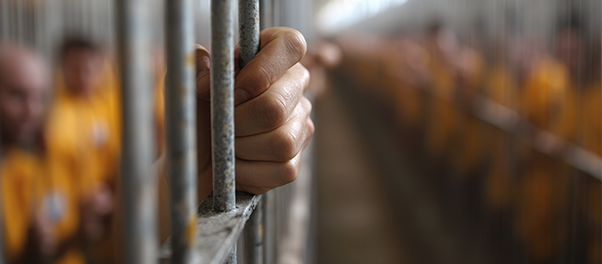The Prevalence of Violence in Prisons
Prison violence encompasses a range of behaviors, including physical assaults, sexual violence, and even murders. Incidents of violence within these facilities are not isolated occurrences but part of a bigger systemic issue that reflects on the conditions and management of these institutions.
Prison Violence Statistics
Data collected over the years paint a stark picture of an inmate's reality. According to recent reports, there has been a noticeable increase in violent incidents in prisons. These incidents range from assaults among inmates to attacks on facility staff, indicating a challenging environment. General data from various years show a pattern of increasing assaults and other forms of violence in prisons.
Murders in Federal Prison
While assaults make up a large portion of the violence reported, murders in federal prisons are particularly alarming. These extreme cases serve as grim reminders of the severity of prison violence. Although less frequent than assaults, the impact of these murders goes beyond the victims and affects the safety and security perception of the entire prison system.
Annual Deaths in Prison
One of the most sobering aspects of prison violence is the number of lives lost each year. It's not just acts of violence that contribute to these deaths; inadequate healthcare, mental health crises, and suicide also play significant roles. Understanding how many people die in prison each year involves looking at a complex interplay of factors, including violence, which remains a significant contributor.Addressing the Challenges
The persistence of violence in prisons poses significant challenges to the goals of rehabilitation and successful reintegration of inmates into society. It also raises critical questions about the management practices and the effectiveness of strategies intended to reduce violence.
Reform and Policy Changes
Addressing the issue of prison violence requires a multifaceted approach. Policy changes, such as the Humane Alternatives to Solitary Confinement (HALT) Act, represent steps toward reforming practices that may contribute to reducing violence. This act limits the use of solitary confinement, a practice that has been shown to exacerbate mental health issues and contribute to the cycle of violence.
Improving Prison Conditions
Beyond policy reforms, improving the overall conditions in prisons is vital. This includes enhancing correctional staff training, better managing inmate populations and providing adequate mental health care. By improving the environment and treatment of inmates, the stressors that lead to violence can be reduced.
The Harsh Reality of Life Behind Bars
Prisons in the U.S. are often hotbeds of violence and trauma, exacerbated by overcrowding and understaffing. For example, recent incidents in Illinois and Los Angeles County jails have shed light on the severe impacts of these conditions, which include frequent inmate abuse and even deaths. Such environments not only worsen mental health issues among inmates but also lead to high rates of PTSD among corrections officers. The lack of adequate healthcare and the prevalence of poor hygiene further deteriorate the physical and mental health of those incarcerated, leaving them ill-prepared for reintegration into society upon release.
Efforts to mitigate these harsh conditions include environmental improvements such as better temperature control and enhanced nutrition, which have been linked to reduced violence. Additionally, initiatives like Vera’s Restoring Promise transform prison spaces into environments that foster dignity and healing, significantly decreasing violent incidents. Educational and vocational training programs are also crucial as they equip inmates with essential skills for successful reentry, reducing the likelihood of recidivism.
Witnessing Violence: A No-Escape Reality
The trauma of witnessing violence in prison is profound and pervasive. Events in 2024, such as the string of deaths in Mississippi prisons and reports of abuse in Florida and Massachusetts, highlight the severe psychological impact on inmates. Studies by researchers like Meghan Novisky and Donald Andrews illustrate that witnessing violence disrupts rehabilitation efforts and severely harms mental and physical health, much like the trauma experienced by survivors of violence. These studies call for urgent reforms to reduce reliance on incarceration and to improve conditions within prisons to mitigate the extensive harm caused by both witnessed and experienced violence.
Record Levels of Violence in New York State Prisons
A report from New York’s Prison Violence Task Force points to a record high in violence levels in state prisons in 2022, with the highest rates of assaults on staff and inmates recorded since tracking began. Implementing the Humane Alternatives to Solitary Confinement (HALT) Act coincided with these increases, although the act aims to introduce more rehabilitative measures rather than punitive solitary confinement. This rise in violence has been attributed to broader national trends of increased violence during the pandemic and demographic shifts within the prison population.
The Path Forward
The continuous high levels of violence in prisons necessitate a multifaceted approach to reform. Advocacy plays a critical role in this, aiming to reduce unnecessary pretrial detentions and non-dangerous incarcerations. This approach emphasizes bail and sentencing reforms to alleviate overcrowding and create safer conditions for inmates and staff.
Moreover, adopting trauma-informed care and improving protective policies within prisons are essential to address the cycle of trauma that many incarcerated individuals endure. As these reforms take root, the goal remains clear: to transform prisons from places of punishment to environments of rehabilitation that uphold the dignity of every individual.
Conclusion
While the challenges are significant, the path to reducing prison violence and enhancing inmate rehabilitation is paved with policies and practices centered on respect for human dignity. By continuing to push for these changes, we can hope to see a reduction in prison violence and a more just correctional system that benefits all of society.
Additional Resources
Blog Post
- Unlocking Wellness Behind the Bars: Illuminating the Struggles and Triumphs of Mental Health in Prisons
- Trauma-Focused Therapy Techniques
- Destigmatizing Mental Health in Prisons
- Prison and Mental Health Reform
Research
- Burnout and Empathy in high-stress mental health settings
- Unlocking Meaning: Metacognition as Key to Incarcerated Persons' Mental Health Recovery
Training
- LIVE: Assessment and Treatment of Clinical Care Needs
- Careers in Correctional Mental Health
- Correctional Mental Health
- LIVE: Incarcerated Transgender Residents: Considerations for Assessment, Management, and Intervention
Podcast
























